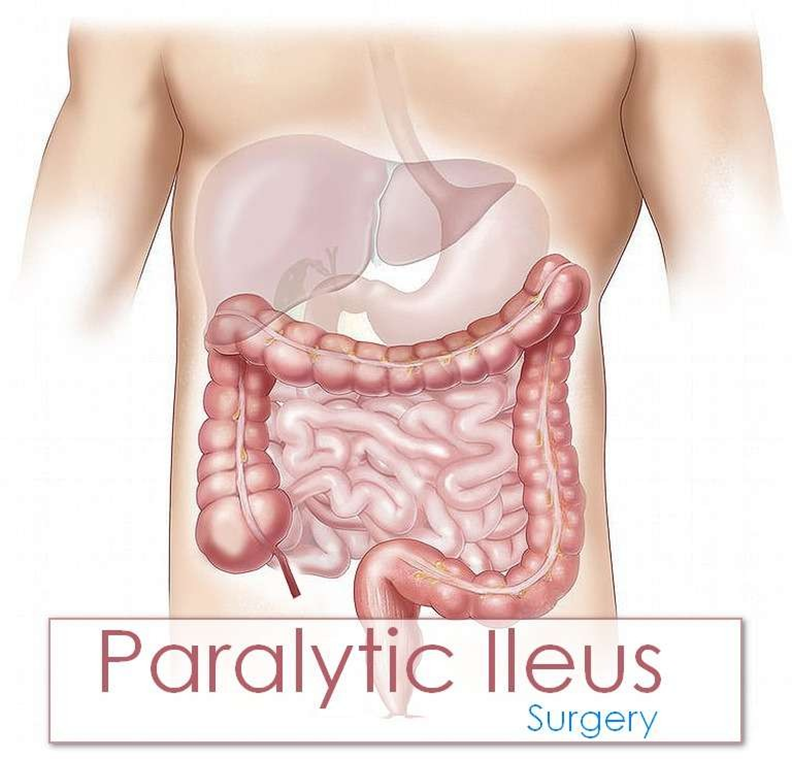A nurse is caring for a patient on the third day following abdominal surgery.
The nurse notes the absence of bowel sounds, abdominal distention, and the patient has not passed any flatus. Which postoperative complication is the patient likely experiencing?
Paralytic ileus
Incisional infection
Fecal impaction
Health care-associated Clostridium difficile
The Correct Answer is A
Choice A rationale:
Paralytic ileus is a common postoperative complication that occurs when the normal movement of the intestines (peristalsis) is slowed or stopped. This can lead to a buildup of gas and fluids in the intestines, causing abdominal distention, nausea, vomiting, and constipation. The absence of bowel sounds, abdominal distention, and the inability to pass flatus are all classic signs of paralytic ileus.
Here are some of the factors that can contribute to paralytic ileus: Manipulation of the intestines during surgery
Anesthesia
Pain medications, especially opioids Electrolyte imbalances
Dehydration
Underlying medical conditions, such as diabetes or kidney disease Treatment for paralytic ileus typically involves:
Resting the bowel by not eating or drinking anything by mouth
Using a nasogastric (NG) tube to suction out gas and fluids from the stomach Providing intravenous (IV) fluids and electrolytes
Encouraging early ambulation
Using medications to stimulate bowel movement, such as metoclopramide or erythromycin

Choice B rationale:
Incisional infection is an infection of the surgical wound. It would typically present with redness, warmth, swelling, and pain at the incision site. The patient may also have a fever. While incisional infections can occur after abdominal surgery, they are not typically associated with the absence of bowel sounds, abdominal distention, and the inability to pass flatus.
Choice C rationale:
Fecal impaction is a severe form of constipation in which a large, hard mass of stool becomes trapped in the rectum. It can cause abdominal pain, bloating, and difficulty passing stool. However, it is not typically associated with the absence of bowel sounds or abdominal distention.
Choice D rationale:
Health care-associated Clostridium difficile (C. difficile) is a bacterial infection that can cause severe diarrhea, abdominal pain, and cramping. It is often associated with antibiotic use. While C. difficile can occur after abdominal surgery, it is not typically associated with the absence of bowel sounds, abdominal distention, and the inability to pass flatus.
Nursing Test Bank
Naxlex Comprehensive Predictor Exams
Related Questions
Correct Answer is D
Explanation
Rationale for Choice A: Obtain vital signs
While obtaining vital signs is important in assessing a patient's overall condition, it is not the first priority in a suspected transfusion reaction.
Vital signs can provide valuable information about the severity of the reaction, but they should not delay the immediate action of stopping the transfusion.
Delaying the cessation of the transfusion could allow for further infusion of incompatible blood or allergens, potentially worsening the reaction and leading to more serious complications.
Rationale for Choice B: Notify the registered nurse
Involving other healthcare professionals is crucial in managing transfusion reactions, but it should not precede stopping the transfusion.
The nurse should prioritize stopping the transfusion to prevent further exposure to potential triggers and then promptly notify the registered nurse for further assessment and interventions.
Timely communication with the registered nurse is essential for coordinating care and ensuring appropriate treatment measures are implemented.
Rationale for Choice C: Administer diphenhydramine
Diphenhydramine, an antihistamine, can be used to treat allergic reactions, but it should not be administered as the first response in this scenario.
The priority is to halt the infusion of the blood product that is potentially causing the reaction.
Administering diphenhydramine before stopping the transfusion could mask the symptoms of the reaction, making it more difficult to assess its severity and progression.
Rationale for Choice D: Stop the transfusion
This is the correct and most immediate action to take when a patient develops itching and hives during a blood transfusion.
These symptoms are indicative of a possible allergic or transfusion reaction, and stopping the transfusion is essential to prevent further complications.
It's critical to act quickly to minimize the amount of incompatible blood or allergens that enter the patient's circulation.
By stopping the transfusion, the nurse can potentially prevent the reaction from worsening and safeguard the patient's well- being.
Correct Answer is B
Explanation
Choice B rationale:
Phlebitis is the inflammation of a vein, often caused by an IV catheter. It's characterized by redness, swelling, warmth, and pain along the vein.
Promptly discontinuing the IV infusion is crucial to prevent further irritation and potential complications such as: Thrombophlebitis (inflammation with clot formation)
Infection
Infiltration (leakage of fluids into surrounding tissues) Extravasation (leakage of vesicant or damaging medications)
Continuing the infusion could exacerbate the inflammation and increase the risk of these complications.
Choice A rationale:
Elevation of the extremity can help reduce swelling, but it does not address the underlying inflammation. It's often used as an adjunct measure after discontinuing the IV.
Choice C rationale:
Warm, moist compresses can provide some comfort and potentially promote blood flow, but they are not recommended as a first-line treatment for phlebitis. They may even worsen inflammation in some cases.
Choice D rationale:
Inserting an IV catheter in the opposite extremity is necessary if the patient still requires IV therapy, but it should not be done before addressing the phlebitis in the current site. This could lead to multiple sites of inflammation and increased risk of complications.
Whether you are a student looking to ace your exams or a practicing nurse seeking to enhance your expertise , our nursing education contents will empower you with the confidence and competence to make a difference in the lives of patients and become a respected leader in the healthcare field.
Visit Naxlex, invest in your future and unlock endless possibilities with our unparalleled nursing education contents today
Report Wrong Answer on the Current Question
Do you disagree with the answer? If yes, what is your expected answer? Explain.
Kindly be descriptive with the issue you are facing.
